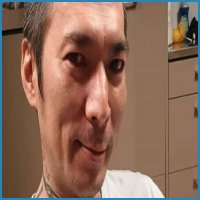Kelly Anne Bates: What Happened at the Crime Scene?
The article dives deep into the investigation surrounding the kelly anne bates crime scene, shedding light on the crucial steps taken to solve the mystery. From the initial response and evidence collection to the detailed forensic analysis, the article explores the various methods used to uncover the truth. It also highlights the importance of witness statements and interviews in piecing together the narrative. The article emphasizes how each stage is vital in understanding the events and bringing justice to those affected.
Alright folks, let's dive into something that's been keeping a lot of us up at night: the kelly anne bates crime scene. The name itself conjures up images of flashing lights, yellow tape, and a whole lot of unanswered questions, doesn't it? This isn't just about a headline; it's about a real person, a real event, and the ripple effects that spread out from that single, defined location. We're going to break it all down, piece by piece, trying to make sense of what happened, why it happened, and what it all means.
The Initial Investigation: First Responders and Evidence Gathering
The initial hours following the discovery at the kelly anne bates crime scene are absolutely crucial, guys. Think about it: every second matters. The first responders, the paramedics, the law enforcement officers – they're the ones who paint the initial picture. Their observations, their actions, they're all vital to the investigation. They're securing the perimeter, ensuring the safety of everyone involved, and starting the process of collecting evidence. This includes everything from photographing the scene, to sketching out the layout, to meticulously documenting every single detail. It's a delicate dance between preserving the integrity of the scene and providing immediate medical assistance. The evidence gathering process is a meticulous endeavor, a painstaking search for clues. This involves collecting any potential physical evidence, such as fingerprints, footprints, or any other trace evidence that might be present. The crime scene investigators, like forensic scientists, are the silent heroes of this phase, working tirelessly to gather every piece of the puzzle. They're looking for anything and everything that could help them understand what happened. This is not a task for the faint of heart; it requires a great deal of patience, attention to detail, and a commitment to gathering all available information. This first phase is critical because it sets the foundation for everything that follows. The accuracy of the initial assessment, the thoroughness of the evidence collection – all of these factors can make or break a case.
It's a whirlwind of activity, with each individual playing their part in the larger operation. The police officers, paramedics, and investigators, everyone is under pressure to work quickly and accurately. The scene itself, the physical space where the events unfolded, becomes a silent witness, holding all the secrets. Every object, every mark, every detail has the potential to tell its own story. The forensic teams are in charge of collecting this story, carefully documenting the scene, and cataloging every piece of evidence. The work is painstaking, and the stakes are high, but the team knows that their efforts will shape the outcome of the investigation. The initial investigation is a complex and multifaceted process, and it takes time and resources to do it right. But it's time well spent. The accuracy of the initial investigation can make the difference between a successful prosecution and a botched case. The efforts of the first responders and investigators are central to the entire process. Without a proper initial investigation, it's impossible to know what happened, why it happened, or who was responsible.
The initial investigation is a chaotic scene. There's a flurry of activity, with people rushing back and forth, and the air is thick with tension. The scene itself is a mix of chaos and precision. The police and forensic teams are working to maintain order while collecting evidence. Every detail is crucial, and the investigators are careful to document everything. The investigation is a race against time, as the evidence begins to disappear, and the memories of the witnesses start to fade. The first responders are the first line of defense, and they are responsible for preserving the scene and protecting the evidence. Their goal is to gather as much information as possible and to help the investigators understand what happened. They are the initial witnesses, and their observations are critical to the case. So, the first phase of the investigation is crucial, and it sets the stage for the rest of the investigation. The police and forensic teams work together to gather as much information as possible. The evidence collected in this phase will be used to determine what happened, why it happened, and who was responsible. And that sets the stage for the next phase in the investigation.
Key Evidence and Forensic Analysis: Unpacking the Clues
This is where things get really interesting, folks. Once the initial groundwork is laid at the kelly anne bates crime scene, all that collected evidence – fingerprints, DNA, fibers, you name it – goes into the lab. Forensic scientists are the superheroes of this stage. They're using cutting-edge technology and years of expertise to unravel the secrets hidden within the evidence. Every piece tells a story, and the scientists are the ones translating it. The forensic analysis is a meticulous process. Labs are like high-tech detective headquarters, where the smallest details are magnified and analyzed to help piece together the puzzle. It's a scientific process, requiring great precision, accuracy, and attention to detail. The scientists analyze the evidence, searching for clues that might help them understand what happened. This can involve anything from DNA analysis and fingerprinting to analyzing blood spatter patterns. The goal is to gain as much information as possible. The forensic scientists are the silent heroes, working behind the scenes to help bring justice to those who have been wronged. Their work is critical to the investigation. The evidence collected at the crime scene is analyzed, and the results are used to help build a case.
Forensic scientists are constantly improving their methods and techniques, making them more effective at solving crimes. They use a wide range of analytical tools, including DNA analysis, toxicology, ballistics, and trace evidence analysis. DNA analysis is a particularly powerful tool, as it can be used to identify individuals with a high degree of certainty. Toxicology is the study of the effects of drugs and poisons on the body, and it can be used to determine whether a victim was poisoned or drugged. Ballistics is the study of firearms and bullets, which can be used to determine the type of weapon used and the trajectory of the bullet. Trace evidence analysis is the study of small pieces of evidence, such as hair, fibers, and paint chips, which can be used to link suspects to a crime scene. The forensic analysis is a complex and time-consuming process, but it is essential for solving crimes. The work of forensic scientists is invaluable in helping to bring criminals to justice and to provide closure to victims' families. The analysis often provides a clearer picture of events. The forensic analysis can help investigators understand exactly what happened, who was involved, and how the crime was committed.
The forensic analysis can be a slow, painstaking process. It's the equivalent of putting together a massive jigsaw puzzle with missing pieces, and the scientists are the ones who have to figure out how to fill in the gaps. Scientists are looking for patterns, connections, and anomalies that might lead them to the truth. The analysis is not always straightforward. Sometimes, the evidence is subtle or difficult to interpret, and the scientists have to rely on their expertise and experience to make sense of it. The forensic analysis is a critical part of the investigation. It can provide valuable information about the crime, the victim, and the suspect. It can also help to identify the perpetrator and bring them to justice. The forensic scientists are the unsung heroes of the criminal justice system. They're the ones who work tirelessly to uncover the truth and bring justice to those who have been wronged. Their work is essential for solving crimes and ensuring that justice is served. The more evidence that is gathered, the more accurate the analysis becomes. And that can make all the difference in the world.
Witness Statements and Interviews: Piecing Together the Narrative
Alright, let's talk about the human element. While forensic science is vital, the accounts from those who were present, or who have knowledge of the events surrounding the kelly anne bates crime scene, are equally crucial. Witness statements and interviews are where the narrative starts to take shape. Investigators are skilled interviewers, trained to elicit as much information as possible from witnesses, suspects, and anyone else who might have something to contribute. It's important to remember that human memory is fallible. Memories can be influenced by a variety of factors, including stress, time, and personal biases. Interviewers are aware of this, and they use different techniques to help witnesses recall events accurately. The goal is to gather as much information as possible, without leading the witness or influencing their statements. The interview process is often challenging. Witnesses may be reluctant to talk, or they may be afraid of the consequences of speaking out. Suspects may deny any involvement in the crime, or they may try to mislead investigators.
The interviewers must be patient, persistent, and skilled in their ability to build rapport with the people they are interviewing. Interviewers are looking for inconsistencies, contradictions, and other signs that might indicate that a person is not being truthful. They're also looking for clues that might help them understand what happened and who was involved. The interview process is not just about gathering information. It's also about building a relationship with the witnesses and suspects. The interviewers must be able to gain their trust and confidence. They also need to be able to communicate effectively, to explain the process, and to answer any questions that the witnesses and suspects may have. The interview process is a critical part of the investigation. It can provide valuable information about the crime, the victim, and the suspect. It can also help to identify the perpetrator and bring them to justice. The interview process is often a time-consuming and challenging process, but it is essential for solving crimes. The information gathered during interviews helps to paint a clearer picture of the events. Interviewers are tasked with the difficult job of finding the truth from the perspectives of those who were present at the scene.
Witness statements and interviews are key to uncovering the truth. Gathering this information can be a delicate process. Investigators must be careful not to influence the witness's memory or to lead them to the answers they want. The information gathered from the witnesses is used to build a timeline of events, to identify potential suspects, and to determine what happened. The interview process is like putting together a jigsaw puzzle. Each interview provides a new piece of information, and the investigators must work to fit all the pieces together. The process is not always easy. Witnesses may be reluctant to talk, or they may be afraid of the consequences of speaking out. But the investigators are trained to handle these situations, and they are committed to getting to the truth. The interviewers are trained to read body language and detect inconsistencies. The more interviews that are conducted, the more the pieces of the puzzle start to come together. And the closer the investigators get to the truth. The statements and interviews are crucial, as they can provide critical insights into the events. All of the information gathered during these interviews is woven together to create a more comprehensive view of the event.
Related Posts

Emma Valentine
Foreign Correspondent
Emma Valentine is a distinguished Foreign Correspondent, providing courageous and insightful reports from international hotspots. With years of experience, she consistently delivers fresh perspectives and engaging content from diverse global settings, making complex geopolitical developments easily digestible for a broad audience.







